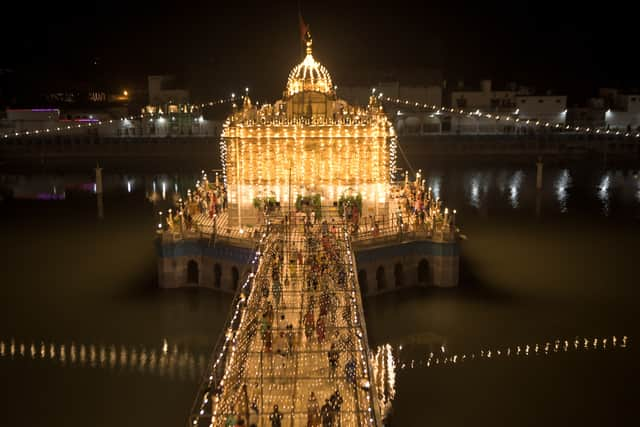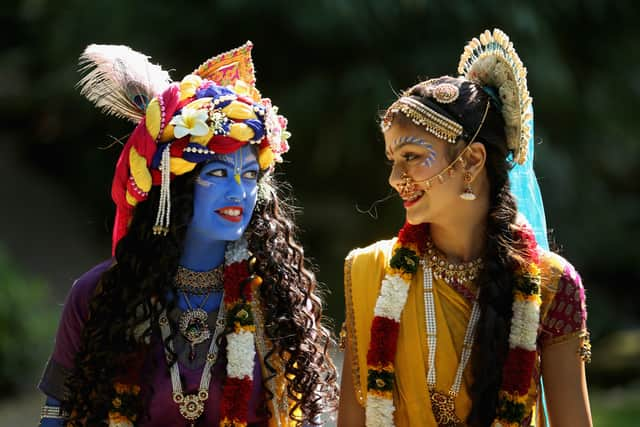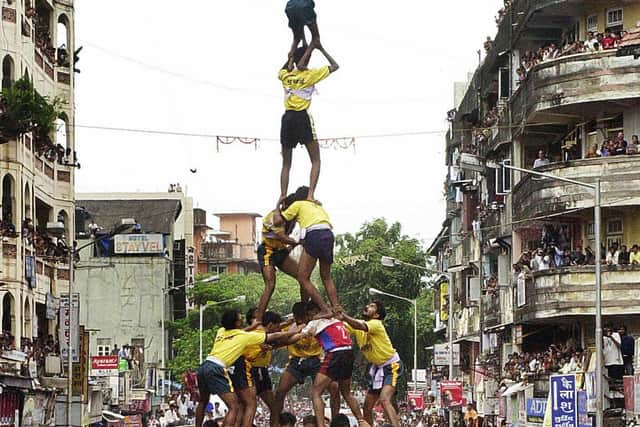When is Krishna Janmashtami 2022? Date of Hindu festival, what does Hare Krishna mean, how is it celebrated
and live on Freeview channel 276
Krishna Janmashtami, also known as Janmashtami or Gokulashtami, is a Hindu festival marking the birth of Krishna, who is the eighth avatar of Vishnu.
This widely celebrated festival lasts for one to two days and celebrations take the form of dance dramas, singing, and reenactments of the life of Krishna.
Advertisement
Hide AdAdvertisement
Hide AdSo when is Krishna Janmashtami this year, and what is the celebration all about? Here’s what you need to know.
When is Krishna Janmashtami?


Krishna Janmashtami is observed on the eighth day of the Hindu month Bhadrapada Masa. This typically falls in August or September in the Gregorian calendar.
In 2022, Krishna Janmashtami will commence on 18 August, lasting until 19 August.
Why is Krishna Janmashtami celebrated?


Krishna Janmashtami is an important festival for those of the Vaishnavism denomination in Hinduism.
Advertisement
Hide AdAdvertisement
Hide AdKrishna was born in an era of chaos when evil was everywhere and persecution was rampant, and there was a threat to his life by his uncle. Following his birth, which is believed to be around 3228 BC, Krishna’s parents took him across the Yamuna (a tributary of the river Ganges) to foster parents.
Krishna is believed to be incarnate of Lord Vishnu, who is the second God in the Hindu triumvirate.
The triumvirate is compiled of three Gods responsible for the creation, upkeep and destruction of the world. They are Brahma (creation), Vishnu (preserver and protector) and Shiva (destroyer).
It is believed that Vishnu returns incarnated during troubled times to restore good and evil, and so far has been incarnated nine times.
How is Krishna Janmashtami celebrated?
Advertisement
Hide AdAdvertisement
Hide AdSome people believe Krishna was born at the stroke of midnight, and so festivities start from that time. Although, celebrations are different across India, as each region and denomination marks the festival with its traditions and sentiments.
Some Hindus decide to stay awake to sing traditional Hindu songs, as songs, dance and dramas are essential.
Plays reenact scenes from Krishna’s early life, and in temples, depictions of Krishna are bathed and placed in cradles, and holy mantras are chanted.
One main mantra chanted is Hare Krishna which is a 16-word Vaishnava mantra mentioned in the Kali-Santarana Upanishad (a Hindu text).
Advertisement
Hide AdAdvertisement
Hide AdFood plays a vital role in the colourful celebrations, and it’s thought that Krishna’s favourite foods were milk and curds.
However, some Hindus choose to fast up until midnight.
Some auspicious timings for Krishna Janmashtami to pray and offer blessings:
- Pune: 12:16 am to 01:01
- New Dehli: 12:03 am to 12:47 am
- Mumbi:12:20 to 01:05
- Kolkata: 11:18 pm to 12:03 am
- Chennai: 11:50 pm to 12:36 am
In cities such as Mumbai, Latur, Nagpur and Pune, they celebrate through a ritual called Dahi Handi, where a young boy, who stands at the top, is elevated by a crowd to reach a clay pot. The pot is filled with buttermilk, and when the boy reaches the top he smashes the pot and the buttermilk spills.


This tradition stems from the legend of baby Krishna, who would try and find hidden milk products stored out of his reach. Krishna would try all sorts of ideas to reach the pots, such as making a human pyramid with his friends to break these high-hanging pots.
The story also reinforces the joyful innocence of children and that love and life’s play are in the Gods.
Comment Guidelines
National World encourages reader discussion on our stories. User feedback, insights and back-and-forth exchanges add a rich layer of context to reporting. Please review our Community Guidelines before commenting.
